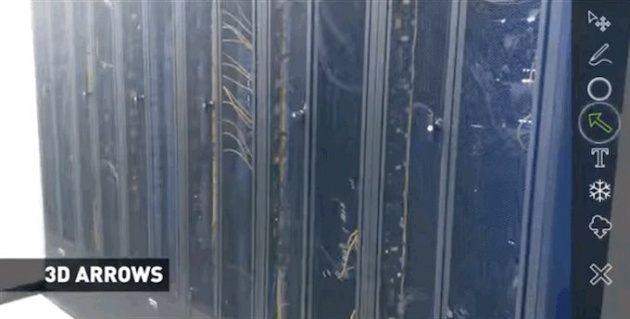

Everyone needs an expert sometimes; a helping hand to point you in the right direction so you can get the job done.
Maybe you’re a mechanic working on an exotic car. You know everything there is to know about cars in general — but only a handful of people really know this car. Alas, they’re all on the other side of the planet.
Maybe you’re working on an oil rig, and one of the panels is throwing out errors. “REPLACE VALVE 6B”, reads the screen. You know how to replace a valve! You… just don’t know where said valve is. Your company has experts for this, but they’ve all been called off to other rigs.
Maybe you’re just at home trying to figure out which of the zillion poorly labeled ports on that shiny new A/V receiver is the one that can support a 4k resolution. All you need is someone to point out the right one, and you’re set.
ScopeAR, a company from YC’s Summer 2015 class, wants to help experts be anywhere they need to be via the magic of augmented reality.
The idea behind ScopeAR, over simplified: take a video call, and add the ability to draw on and annotate anything the person on the other end is looking at. As they move their camera, anything you’ve added — arrows, text, custom-made 3D models, etc. — stays locked onto the right place.
Need to know which valve is “Valve 6B”? Point your camera at that array of valves, and the expert can point right to it.
Rather than trying to supply a zillion experts themselves, ScopeAR is focusing on working with companies and teams who already have experts of their own. In many cases (like with the oil rig example above) companies will have specialized experts on hand, but said experts can’t be everywhere at once. Do they hire an expert for each rig, when the experts knowledge might only be needed once a month? Do they hire one expert and fly them around endlessly, wasting much of their time in commute? Or do they let the expert relax in one location, and beam them in via augmented reality when their knowhow is needed?
The concept works beyond oil rigs, of course. TrendyGadgetCo could use it to help customers figure out their purchases as if they’re looking right over the customer’s shoulder. Need help figuring out which HDMI port is which? Pop into the app, ring up one of TrendyGadgetCo’s experts, and have them point it out from a zillion miles away. They could say “Turn it off and back on again” while pointing at the power button.
Here’s what it looks like in action:
One thing the video doesn’t make quite clear: in its current form, ScopeAR requires a physical marker to act as its point of reference. The person dialing in the expert gets this marker — either printing it out themselves or getting it from their company beforehand — and sticks it on the gear they’re looking at. The company was previously experimenting with using Metaio’s AR framework for markerless tracking, but had to move away from it after Metaio wasacquired by Apple and its products were shut down.
In its stead, ScopeAR currently uses Qualcomm’s Vuforia framework for tracking a marker, with a bespoke solution for transmitting the video/audio/annotation data back and forth between the caller and the expert.
ScopeAR is currently working with companies on a one-by-one basis. If your company works with field technicians and could use something like this, you can reach out to them right over here.



